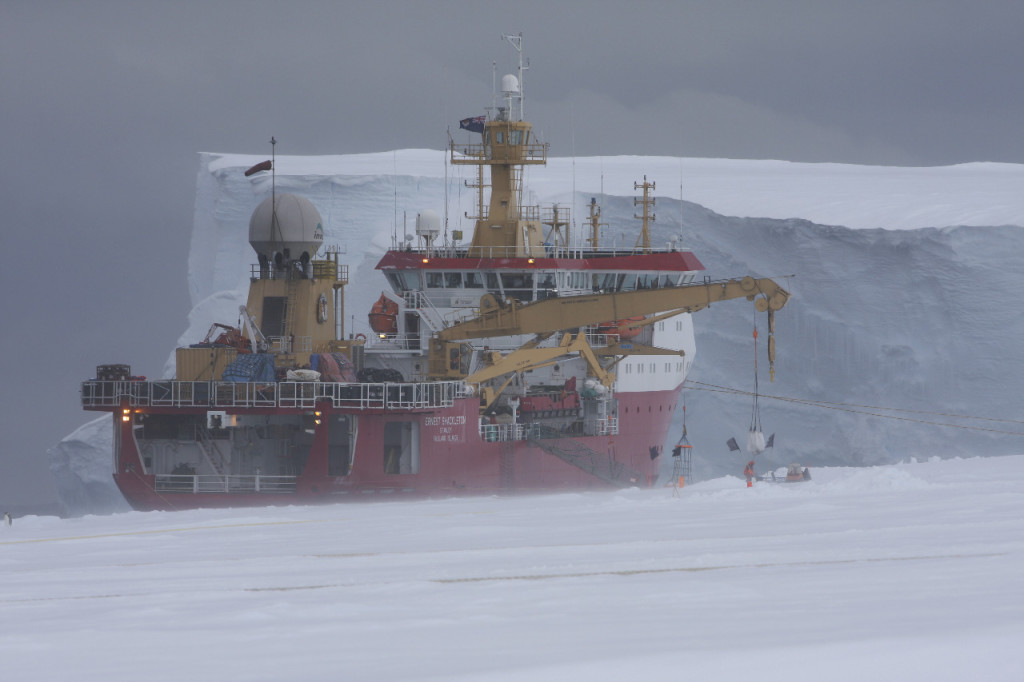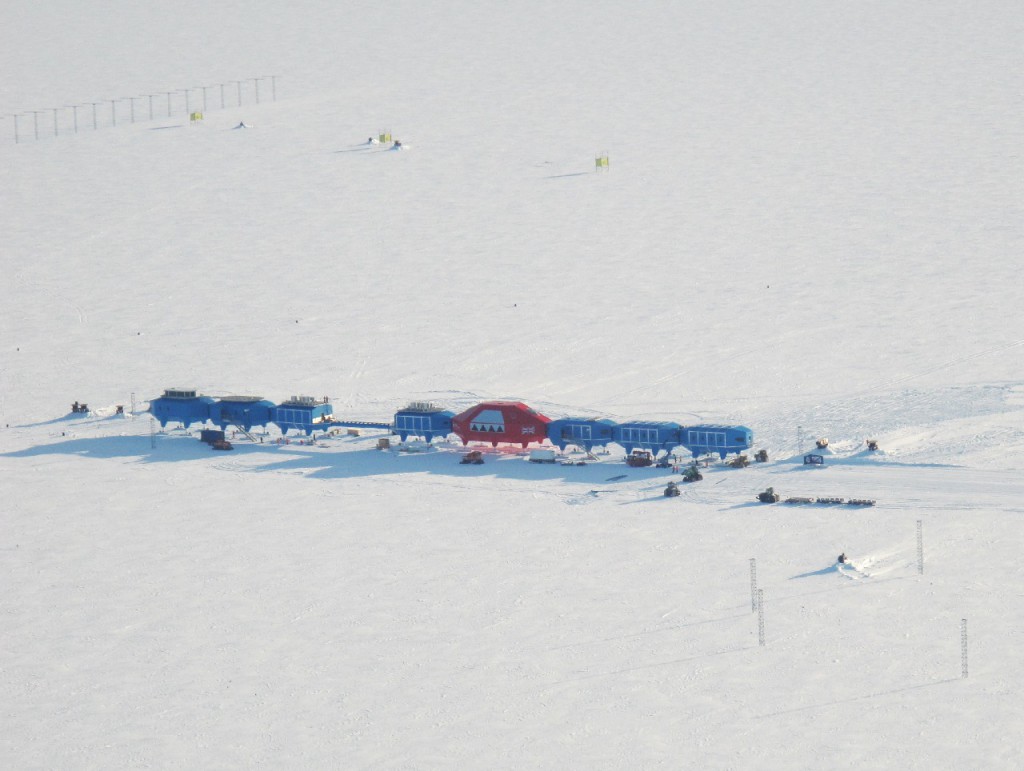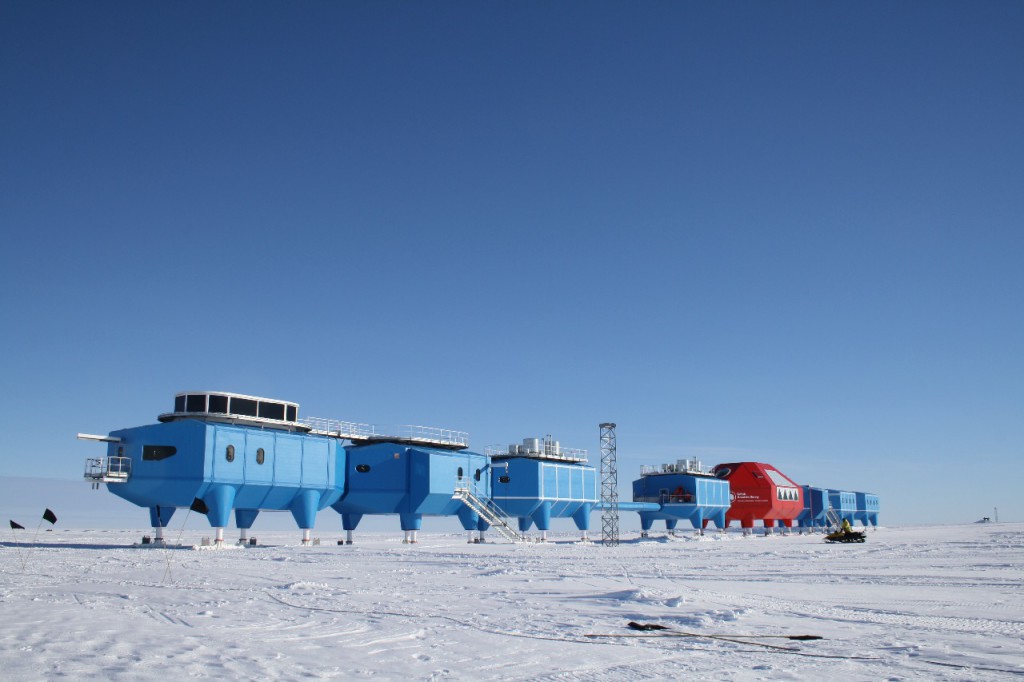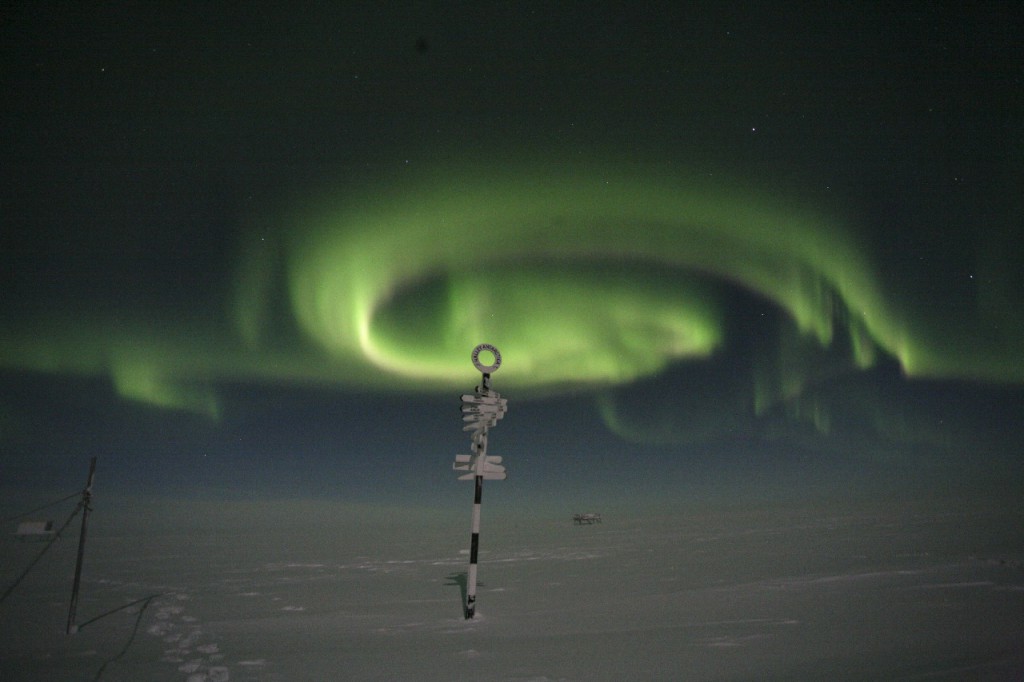Location: Halley Research Station

If you have arrived at Halley by ship, you will travel up to the station on a Sno-cat or a trailer. The distance will depend on where the ship has moored as it does not always moor in the same place. If however you have arrived by aircraft, you will land on a snow / ice runway which is kept groomed by the staff at the station. The approach to Halley in an aircraft must be sure to avoid the Clean Air Sector, where special experiments are being undertaken in the sterile atmosphere. The experiments don’t want to be jeopardised by contaminating the air with aircraft exhaust emissions.

Halley is approximately eight hours flying time from Rothera, often via Fossil Bluff or Sky-Blu Field Stations to refuel. From the air the station seems a tiny scattering of buildings and structures compared to the enormity of the surrounding expanse of ice. Whichever way you have arrived at Halley, the chances are you will be involved in the relief (resupply) of the station once the ship arrives. Once the ship is tied up, a core crew of crane drivers, mechanics, and Sno-cat/Challenger tractor drivers will be moved off the ship and put up on station. They will work shifts, operating 24hrs a day until the ship is unloaded. This usually takes about seven days, depending on cargo and weather. After half a day to settle in, work will begin in earnest – six days on and Sundays off. If the weather turns bad, staff may be laid up for a day or two. To keep on schedule, this means extra work at the weekends! Inside work will continue regardless, and most summer staff are allocated work elsewhere during adverse weather. Sundays are a time for relaxing and enjoying the amazing environment – igloo building, games, barbeques etc. After the bulk of the season’s work has been completed, the ship will return for last call, to offload more cargo and load up waste, while the station is tidied up and prepared for winter.

Halley VI consists of eight modules, all joined together and mounted on hydraulic legs, each fitted with special skis. Due to the relentless march of the Brunt Ice Shelf towards the Weddell Sea, the modules can be separated and towed to another more inland location when the need arises. The blue modules include state-of-the-art science platforms, accommodation, power and utilities and an observation deck. The big central red module contains the communal areas. In here are the dining area and kitchens, library, bar, computer rooms and space to relax and send time with your colleagues.
The station was commissioned in 2006 and its unique and innovative structure was the result of an international design competition in collaboration with the Royal Institute of British Architects (RIBA). The station took four years to build and delivered its first scientific data in 2012, before being officially opened in February 2013.

Surrounding the main station modules are various science cabooses and the SuperDARN antenna array. Further away is the Clean Air Sector laboratory which is upwind of the station to allow its sensitive instruments to sample the incredibly clean air found in this region of Antarctica.
